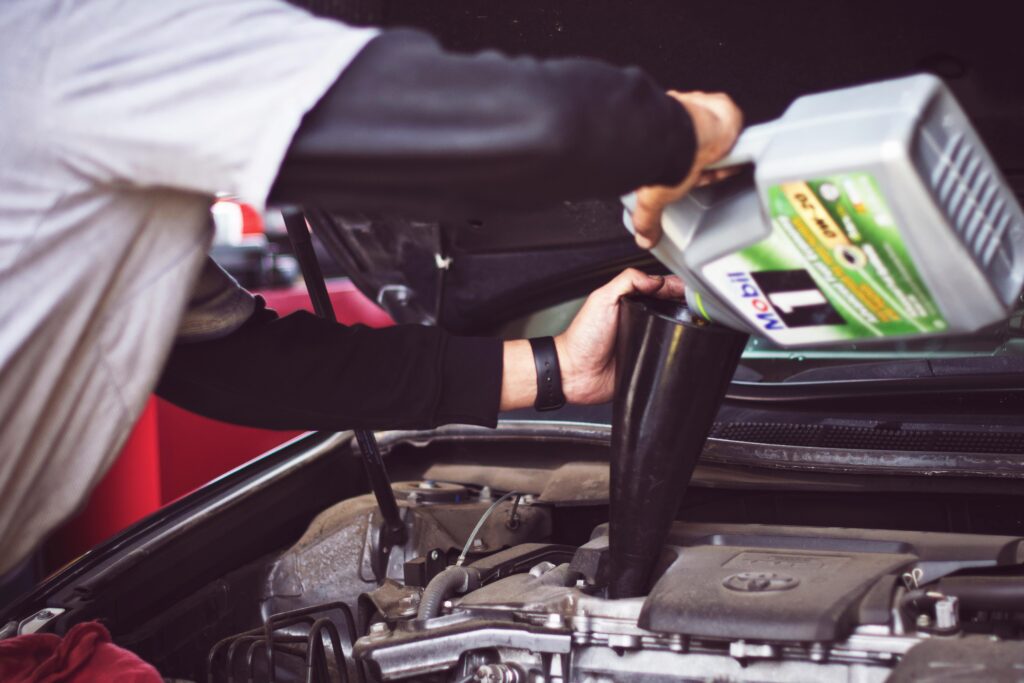Contents
oil on coil pack boot
Imagine lifting the hood of your vehicle, only to find an unexpected and perplexing sight—oil on a coil pack boot. It’s a scenario that often leaves vehicle owners in a state of confusion and concern. In this article, we’ll delve into the intriguing topic of oil on a coil pack boot, exploring its causes, diagnosis, and most importantly, the solutions to this issue.

Importance of the Vehicle’s Ignition System:
The presence of oil on a coil pack boot is not a matter of mere aesthetics; it holds significant implications for the proper functioning of your vehicle’s ignition system. Your ignition system plays a pivotal role in the combustion process that powers your engine. It’s a critical link in the chain that propels you down the road with efficiency and reliability.
What to Expect:
This article will provide you with valuable insights into the issue of “oil on coil pack boot.” We’ll uncover the potential causes behind this phenomenon, guide you through the diagnosis process, and offer effective solutions. By the end, you’ll be well-equipped to address this issue, ensuring that your vehicle’s ignition system remains in top shape, and you can enjoy a trouble-free ride. Let’s dive into the world of oil on the coil pack boot and explore how to keep your vehicle’s heart, the engine, beating strong.
Section 1: Understanding the Issue
To effectively address the presence of oil on a coil-pack boot, it’s crucial to first grasp what a coil-pack boot is, its role in the vehicle’s ignition system, and the issue of oil appearing on it. In this section, we’ll explore the fundamentals of this issue and its impact on engine performance.
1. The Role of a Coil Pack Boot:
A coil pack boot is an essential component in a vehicle’s ignition system. It’s part of the ignition coil assembly, and its primary role is to transfer the high-voltage electrical energy generated by the ignition coil to the spark plug. This energy is what ignites the air-fuel mixture within the engine’s cylinders, initiating the combustion process that powers your vehicle.
2. The Issue of Oil on the Coil Pack Boot:
The issue at hand involves the presence of oil on the coil pack boot. Oil is not a typical substance in this area of the engine. When oil makes its way onto the coil pack boot, it disrupts the critical electrical connection between the ignition coil and the spark plug.
3. Impact on Engine Performance:
The consequences of oil on the coil pack boot are far-reaching and have significant implications for your vehicle’s engine performance:
Electrical Interference: Oil is a non-conductive substance. When it coats the coil pack boot or the spark plug, it can disrupt the electrical connection, hindering the transfer of high-voltage energy. This interference can lead to reduced spark plug performance and misfires.
Engine Misfires: Misfires occur when the spark plugs do not fire properly. This can result in uneven engine operation, rough idling, and decreased power output. Over time, frequent misfires can also impact fuel efficiency and emissions.
Reduced Power and Efficiency: The interruption of the ignition process can lead to reduced engine power, slower acceleration, and overall diminished engine performance. It affects the ability of the engine to generate power from the air-fuel mixture.
Understanding the critical role of the coil pack boot in the ignition system and the impact of oil on it is vital to grasp the importance of addressing this issue. The ignition system is the heartbeat of your vehicle’s engine, and any disruption to it can lead to poor performance and reliability.
In the next section, we will explore the potential causes behind oil appearing on the coil pack boot, providing insights into why this issue occurs in the first place.

Section 2: Causes of Oil on Coil Pack Boot
The presence of oil on a coil pack boot is not a random occurrence; it typically has underlying causes. In this section, we will explore the potential reasons behind the oil being present on the coil pack boot, discussing common causes, such as valve cover gasket leaks and damaged O-rings, and how these issues lead to oil infiltration. We’ll also explain how these oil-related problems can affect the vehicle’s ignition system and engine.
1. Valve Cover Gasket Leaks:
One of the most frequent culprits behind the oil on the coil pack boot is a leak in the valve cover gasket. The valve cover gasket is a crucial component that seals the gap between the valve cover and the engine block. When this gasket deteriorates or becomes damaged, it allows oil to escape. This oil can then make its way into the spark plug wells, ultimately reaching the coil pack boot.
2. Damaged O-Rings:
O-rings are used in various engine components to create an effective seal. However, if these O-rings degrade or suffer damage, they can no longer effectively prevent oil from seeping into areas where it shouldn’t, including the spark plug wells.
3. Impact on the Ignition System and Engine:
When oil infiltrates the coil pack boot and surrounding components, it can have a detrimental impact on the vehicle’s ignition system and engine:
Reduced Electrical Conductivity: Oil is a non-conductive substance. When it coats the coil pack boot or the spark plug, it can interfere with the electrical connection. This, in turn, can lead to poor spark plug performance and misfires, which can result in reduced engine efficiency.
Misfires and Decreased Power: An impaired ignition system can lead to engine misfires, reduced power output, and decreased fuel efficiency. You may experience symptoms like rough idling, sluggish acceleration, and an overall decrease in engine performance.
Understanding the potential causes of oil on the coil pack boot is essential for both diagnosis and addressing the issue. Left unattended, this issue can lead to more severe engine problems and potentially costly repairs. In the following sections, we will delve into the diagnosis and solutions for this issue, ensuring that your vehicle’s ignition system operates optimally, and your engine performs at its best.
Section 3: Diagnosing the Issue
Effectively diagnosing the presence of oil on the coil pack boot is a crucial step in addressing the problem. In this section, we will guide how to diagnose this issue effectively, discuss the steps involved in identifying the source of the oil, and emphasize the importance of accurate diagnosis to determine the necessary repairs.
1. Visual Inspection:
The initial step in diagnosing oil on a coil pack boot is a visual inspection. Here’s how to go about it:
Pop Open the Hood: Start by opening the vehicle’s hood and locating the coil pack or coil packs. These are usually positioned near the engine’s valve cover or cylinder head.
Examine the Area: Carefully inspect the area around the coil packs, paying special attention to where the coil pack boot meets the spark plug. Look for any signs of oil accumulation, which may appear as dark, wet patches or drops on the coil pack boot or around the spark plug.
Inspect the Coil Pack Boot: Examine the coil pack boot itself for any visible oil residue. Be thorough in your examination, as the oil may not always be immediately apparent.
2. Removing the Coil Pack Boot:
If you suspect the presence of oil but are unable to confirm it with a visual inspection, consider removing the coil pack boot for a closer examination:
Disconnect the Electrical Connector: Carefully disconnect the electrical connector from the coil pack.
Gently Remove the Coil Pack Boot: Carefully and gently remove the coil pack boot from the spark plug.
Examine the Interior: Inspect the interior of the coil pack boot and the spark plug for any signs of oil. If oil is present, this is a clear indication of the issue.
3. Identifying the Source:
Identifying the source of the oil is crucial for accurate repairs. You should investigate the area surrounding the coil pack boot, particularly around the valve cover or cylinder head. Look for signs of leaks, particularly around the valve cover gasket or O-rings.
Importance of Accurate Diagnosis:
Accurate diagnosis is pivotal for effective resolution. Identifying the source of the oil ensures that the right repair approach is taken. If the issue is a valve cover gasket leak, you will need to address the gasket and replace it. On the other hand, if there’s a problem with damaged O-rings, these components will need replacement. Understanding the source helps avoid unnecessary repairs and ensures that the issue is resolved effectively.
In the following sections, we’ll explore the appropriate solutions for addressing oil on the coil pack boot, including steps for addressing valve cover gasket leaks and damaged O-rings, as well as the significance of professional assistance and a thorough cleaning process.

Section 4: Solutions and Repairs
Once you’ve accurately diagnosed the presence of oil on the coil pack boot and identified the source of the oil, it’s time to explore the steps and solutions for addressing this issue effectively. In this section, we’ll delve into the repair process for common issues like valve cover gasket leaks or damaged O-rings, as well as highlight the importance of professional assistance and the significance of thorough cleaning during the repair process.
1. Addressing Valve Cover Gasket Leaks:
If the source of the oil on the coil pack boot is a valve cover gasket leak, the following steps are involved in addressing the issue:
Gasket Replacement: The most common and effective solution is to replace the valve cover gasket. This process typically requires the removal of the valve cover, the old gasket, and the application of a new gasket along with proper torquing of the valve cover bolts.
2. Handling Damaged O-Rings:
If damaged O-rings are responsible for the issue, the repair process involves:
O-Ring Replacement: Damaged O-rings should be replaced with new ones. This may require disassembling components, such as the spark plug well seals, to access and replace the O-rings.
3. Professional Assistance:
In both cases, professional assistance is highly recommended, particularly if you’re not experienced with engine repairs. Professional mechanics have the knowledge, tools, and expertise to perform these tasks accurately, ensuring a reliable and effective repair.
4. Thorough Cleaning Process:
After the source of the oil is addressed and the necessary repairs are completed, it’s vital to perform a thorough cleaning process:
Clean Affected Components: Clean the spark plug wells, the coil pack boot, and the surrounding area to remove any residual oil. Oil in these areas can affect electrical connections and may lead to misfires.
Inspect and Replace Components: During this cleaning process, inspect the coil pack boot, spark plugs, and spark plug wells for any signs of damage. Replace any components that are worn or compromised.
Reassembly: Reassemble the components carefully, ensuring that everything is securely in place.
Quality Assurance: Start the vehicle and monitor it to ensure that the issue is fully resolved and there are no further signs of oil leakage onto the coil pack boot.
The significance of professional help and thorough cleaning cannot be overstated, as they ensure that the repair is complete and effective. Addressing the issue promptly and accurately is crucial for maintaining the optimal performance and reliability of your vehicle’s ignition system and engine.
In the following section, we’ll explore preventive measures to avoid encountering oil on the coil pack boot in the future, allowing you to enjoy smooth and trouble-free driving.
Section 5: Preventing Future Issues
Preventing the reoccurrence of oil on the coil pack boot is vital for maintaining the reliability and performance of your vehicle’s ignition system and engine. In this section, we will offer preventive measures to avoid this issue in the future, discuss the importance of regular maintenance, including gasket and O-ring replacements, and highlight the role of vehicle care in maintaining a clean and efficient coil pack boot and ignition system.
1. Regular Maintenance:
One of the most effective ways to prevent oil from appearing on the coil pack boot is to adhere to a regular maintenance schedule. This includes routine checks of engine components and systems, including the valve cover gasket and O-rings.
2. Gasket and O-Ring Replacement:
Gaskets and O-rings play a crucial role in sealing various engine components. Over time, they may deteriorate. To prevent oil leakage, ensure that gaskets and O-rings are replaced as part of your regular maintenance routine. This is particularly important for the valve cover gasket and any O-rings that seal components like the spark plug wells.
3. Engine Component Inspection:
During maintenance checks, pay close attention to the condition of components like the valve cover gasket and O-rings. Early detection can prevent leaks before they become more significant issues.
4. Vehicle Care:
Diligent care of your vehicle can also contribute to the prevention of oil on the coil pack boot. Keeping your vehicle clean, both inside and out, prevents debris and contaminants from entering the engine bay.
5. Regular Cleaning:
Regularly clean the engine bay, paying special attention to areas around the valve cover and spark plug wells. Removing dust and dirt prevents debris from accumulating and potentially causing leaks.
6. Consistent Use:
To maintain the flexibility and sealing properties of gaskets and O-rings, it’s important to consistently use your vehicle. Running the engine periodically, even during colder months, helps prevent seals from drying out and becoming less effective.
7. Timely Repairs:
If you notice any signs of oil leakage, such as a strong odor or visible oil in the engine bay, address the issue promptly
Preventing oil on the coil pack boot is not just about addressing the issue when it occurs but also proactively taking steps to avoid it. Regular maintenance, careful vehicle care, and early detection of potential problems are key to keeping the coil pack boot and ignition system in top shape.
In the next section, we will conclude the article by summarizing the key points discussed, reiterating the importance of addressing this issue, and encouraging readers to take action and seek professional assistance when needed.

Conclusion
In conclusion, the presence of oil on the coil pack boot is a matter that should not be taken lightly, as it directly impacts the proper functioning of your vehicle’s ignition system. Throughout this article, we’ve explored the causes, diagnosis, and solutions related to this issue, as well as preventive measures to ensure it doesn’t reoccur.
Key Points Discussed
We identified common causes of oil on the coil pack boot, such as valve cover gasket leaks and damaged O-rings, and how these issues lead to oil infiltration.
Effective diagnosis was emphasized, with guidelines on visual inspection, removal of the coil pack boot, and the importance of identifying the source of the oil for accurate repairs.
Solutions for addressing the issue were explored, with specific steps for addressing valve cover gasket leaks and damaged O-rings, along with the importance of professional assistance and a thorough cleaning process.
Preventive measures to avoid future occurrences were discussed, emphasizing regular maintenance, gasket, and O-ring replacement, engine component inspection, vehicle care, regular cleaning, consistent use, and timely repairs.
Importance of Prompt Action:
Addressing the issue of oil on the coil pack boot promptly is crucial to maintaining optimal vehicle performance. Delaying action can lead to reduced engine performance, misfires, and a decrease in overall vehicle reliability. By following the tips and recommendations in this article, you can ensure that your vehicle’s ignition system operates at its best, providing a smooth and trouble-free driving experience.
Take Action and Seek Professional Assistance:
If you encounter the issue of oil on the coil pack boot, we encourage you to take action. Do not hesitate to diagnose and address the problem promptly. Professional assistance is invaluable in ensuring that repairs are performed accurately and effectively. By doing so, you can enjoy a reliable and trouble-free driving experience.
In the world of automotive maintenance, knowledge, and proactive care are your best allies. Stay vigilant, prioritize vehicle health, and remember that addressing issues like oil on the coil pack boot promptly will keep your vehicle running at its best, ensuring your safety and comfort on the road.






